What is start stop continue?
Start stop continue is a retrospective technique to align on what is working, what is not working and what you need to start doing. Without examining and reflecting on your past work, you may continue following old patterns of doing more work the same way without moving forward and getting closer to your goals.
Start stop continue template divides activities and decisions into three categories:
Start
Things that will have a positive impact on the team (or your own personal goals) that aren't already implemented.
This includes activities (behavioral, experimentation, improvements) that may:
-
Improve existing processes or lead to the creation of a new process.
-
Upgrade quality of your outcomes.
-
Positively impact how you or your team feels.
-
Improves how team communicates and collaborates.
Stop
Things that aren't helping the team (or you) to achieve their goals and should be stopped. Stopping these activities will free up time to do more impactful work.
This includes activities (behavioral and otherwise) that:
-
Have a negative impact on the way team feels or the way things work.
-
Wastes time and resources with inconsequential work.
-
Inefficient practices or processes.
-
Do not align with your goal and purpose.
-
Distractions that eat into your time without adding value.
Continue
Things that are already working well and should stay to ensure future success.
This includes activities that:
-
You and your team finds most fulfilling.
-
Bring the biggest value / impact to your own goals or your team's goals.
-
Promote well-being and increase people's motivations.
-
Create a positive influence on work culture.
When should you use the start stop continue template?
Start stop and continue practice is most useful in the following cases:
-
Team retrospectives: Do it with the team to look back on what happened and how to improve. Must be done at a regular cadence. e.g. End of Sprint: set actionable points at the end of an agile sprint or project that help your team improve and move forward.
-
Personal development: Use the model each week to make regular improvements and achieve your personal goals.
-
Give and receive feedback: Understand current levels of performance and identify ways to improve.
How do you facilitate start stop continue?
Start stop continue team retrospective process requires team members to reflect on a project or a sprint, determine how it went and identify ways to improve. It includes these four steps:
Step 1 : Reflect
Each individual team member writes down the activities they think they should start, stop and continue doing as a team. Do this in smaller groups if there are many team members else consolidating everyone's response will take forever.
Step 2: Group
Team leads, assigned facilitator or specific people in the team collaborate and group similar ideas together by identifying common themes and patterns based on responses from step 1. Discard ideas that are not in the scope of this discussion.
Step 3: Vote
Allocate 3 (or a pre-decided number) votes to each team member and ask them to choose ideas from step 2 that they'd like to see implemented. They are free to use all votes on one idea or spread it across different ideas. Based on the number of votes, identify which topics are important for team to discuss further. Allocate a few minutes to each chosen topic and have team members discuss, clarify and challenge.
The output of this step should be a prioritized list of what your team should start, stop and continue doing.
Step 4: Share
Assign an owner (an individual or a group of people) to each action item, agree upon timelines and share it with the whole group to drive accountability and shared understanding.
What should I start stop continue examples?
Here are a few start stop continue retrospectives, personal goals and feedback examples:
START STOP CONTINUE TEAM RETROSPECTIVES EXAMPLE
Start
-
Spend 30% time on platform improvements
-
Get sign off on design changes from two senior devs
-
Onboarding plan for new team members
-
Involve only key members required for each decision
Stop
-
Walking in late to meetings
-
Concluding a meeting without clear next steps
-
Committing timelines without clarity and context
-
Adding too many stories to the sprint
Continue
-
15 mins daily stand up to align on goals for the day
-
Dev testing features before handing over to QA
-
Doing product demos to gather feedback
-
One pagers for tech platform stability
START STOP CONTINUE PERSONAL DEVELOPMENT EXAMPLE
Start
-
Daily productivity review
-
Block 1 hr each day for future strategy
-
Public speaking practice
-
Feedback on digital products
-
Website new design
Stop
-
Watching netflix on weekdays
-
Eating too much junk on weekends
-
Perfecting a feature before releasing
-
Checking social media while working
Continue
-
Healthy breakfast before work
-
30 mins exercise 5 days a week
-
Drink plenty of water
-
Read 30 mins before bed
-
Planning eod for next day
START STOP CONTINUE FEEDBACK EXAMPLE
Start
-
Mentoring 2 junior devs
-
Spend 30 mins daily to practice a new skill
-
Plan to improve dev test quality
Stop
-
Interrupting others in meetings
-
Putting others down and making them feel bad about not knowing something
-
Saying yes to activities that are not aligned with a team's goals
Continue
-
Meeting quality standards
-
Maintaining high production uptime
-
Working closely with stakeholders to update and align
Why is start stop continue effective?
Start stop continue technique is effective because:
-
It makes team members feel empowered by reviewing how they are doing and what they can do to improve.
-
Reinforces good behaviors, practices and habits in the team.
-
Encourages continuous improvement, rather than ad-hoc iteration.
-
Leads to rich insights as team members reflect on what's getting in their way.
-
Promotes continuous improvement as such reflections are done at a regular cadence.
-
Shifts team members from blame and victim mindset to action and responsibility.
What is start stop continue feedback?
Feedback in a work environment is critical to understand how one is performing and what they must do to improve. However, most people are not good at giving and receiving feedback. Start stop continue provides a simple framework to overcome this challenge.
By categorizing the request across these three (start, stop and continue) dimensions, it's easy to give as well as get feedback. To get feedback, ask the feedback provider to fill this template:
Start: Things I am currently not doing that I should start doing to grow and improve in my role.
Stop: Things I am doing that are not helpful and must be stopped.
Continue: Things you value that I am currently doing and must continue.
How often should I use the start, stop, continue retrospective?
For team retrospectives, use start stop continue template after every sprint, end of quarter, major project milestone or an event. For personal development, do it every week by reviewing your activities from the previous week and identifying what delivered value and what must not be done at all. For feedback, request your manager weekly or bi-weekly. Get 360 degree feedback from peers and coworkers monthly or once a quarter.

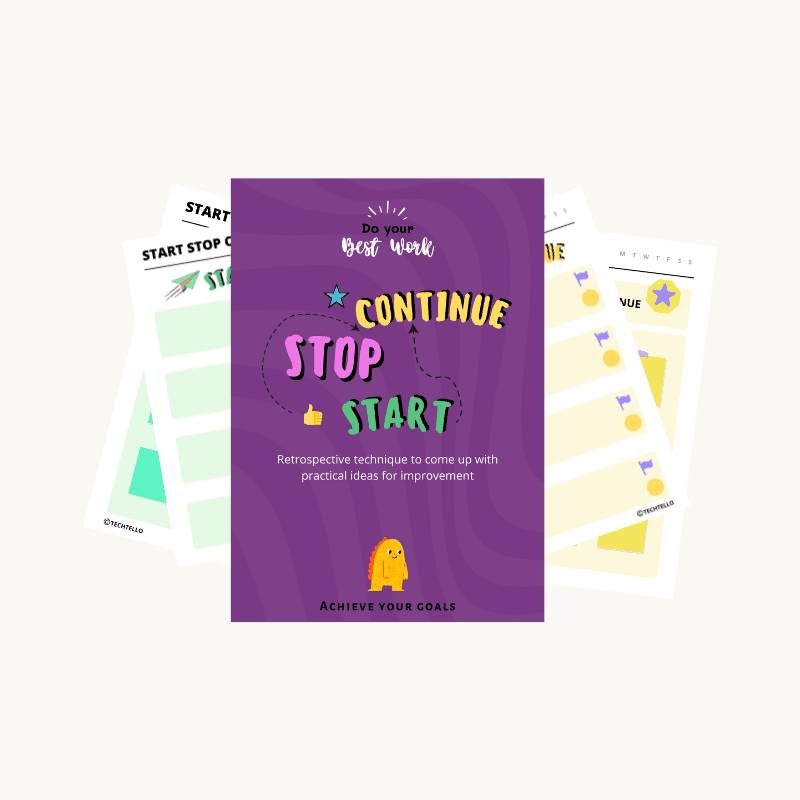
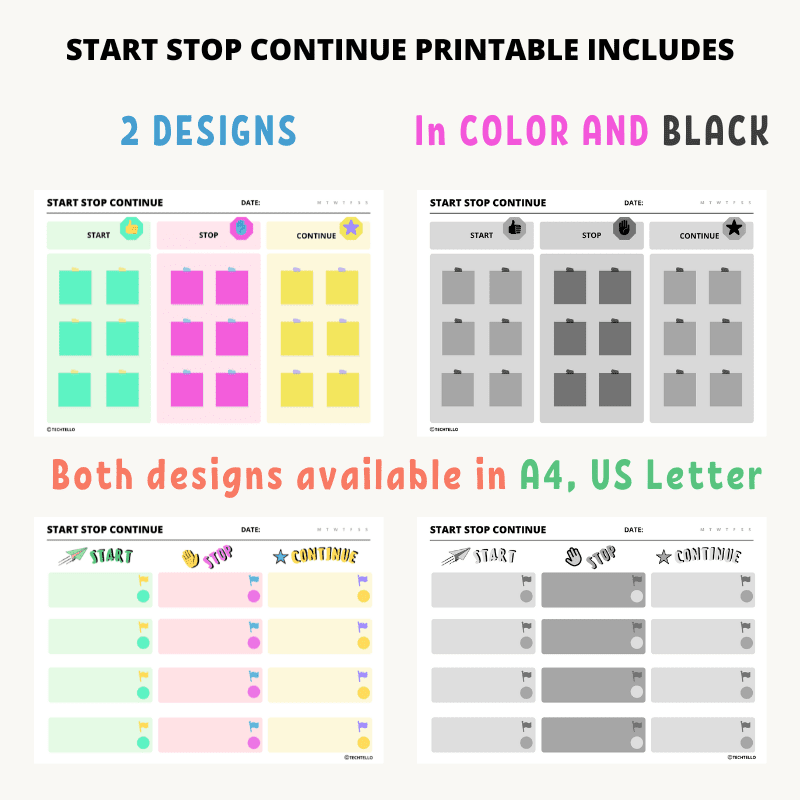
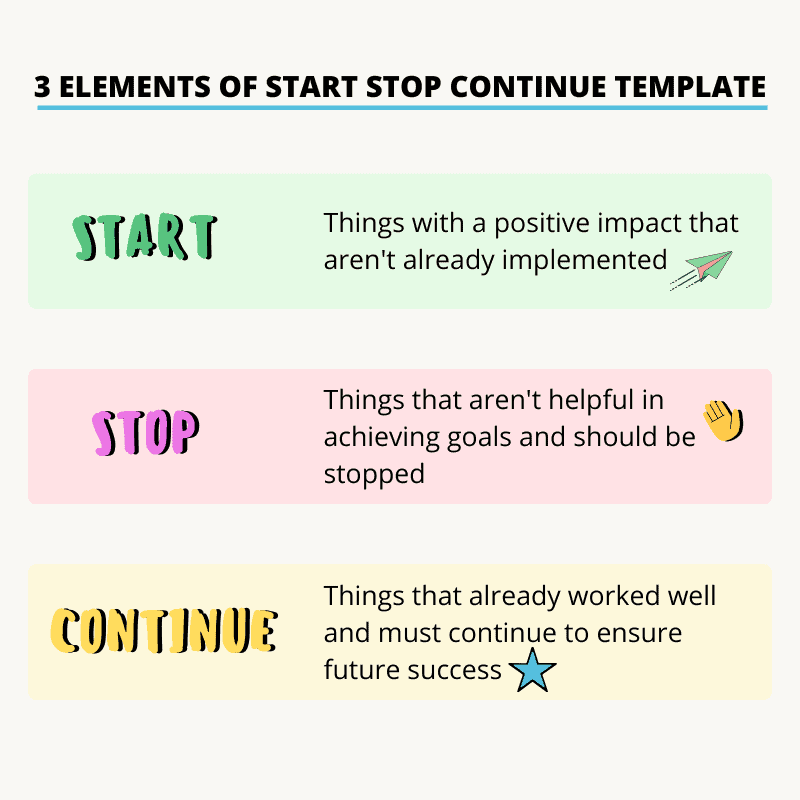
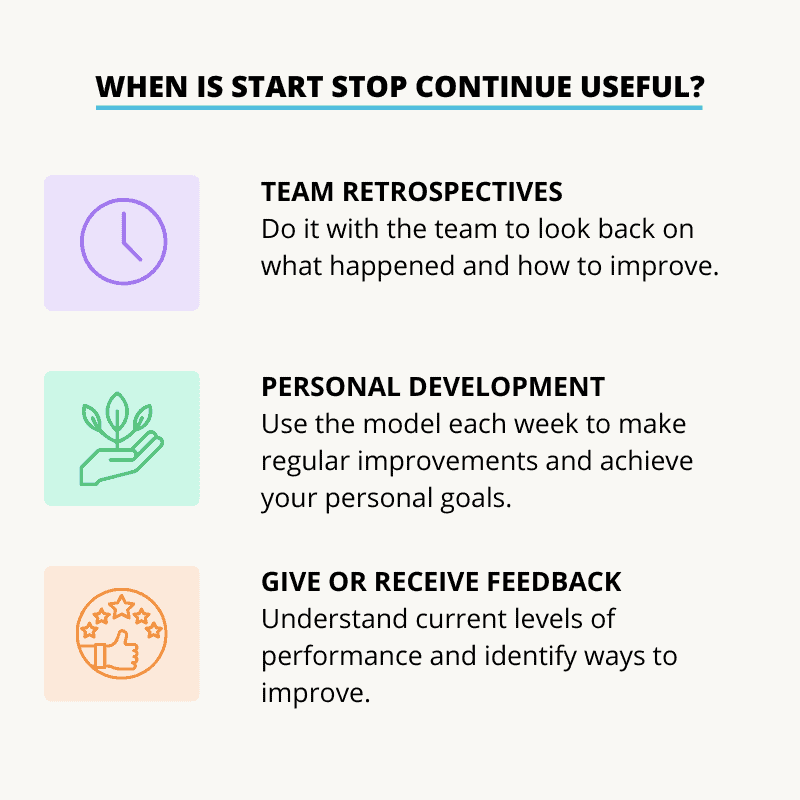
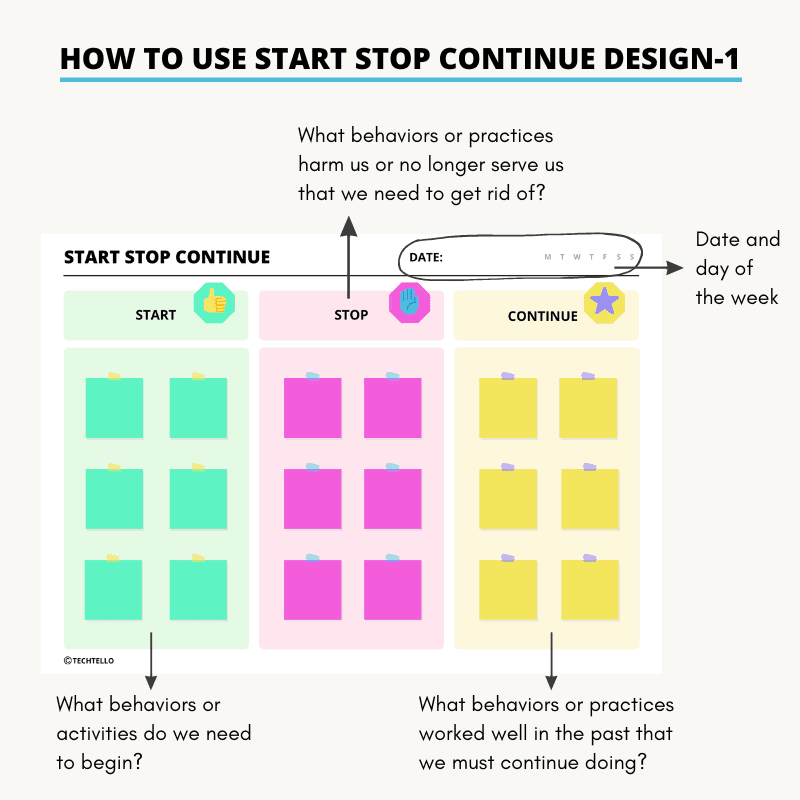
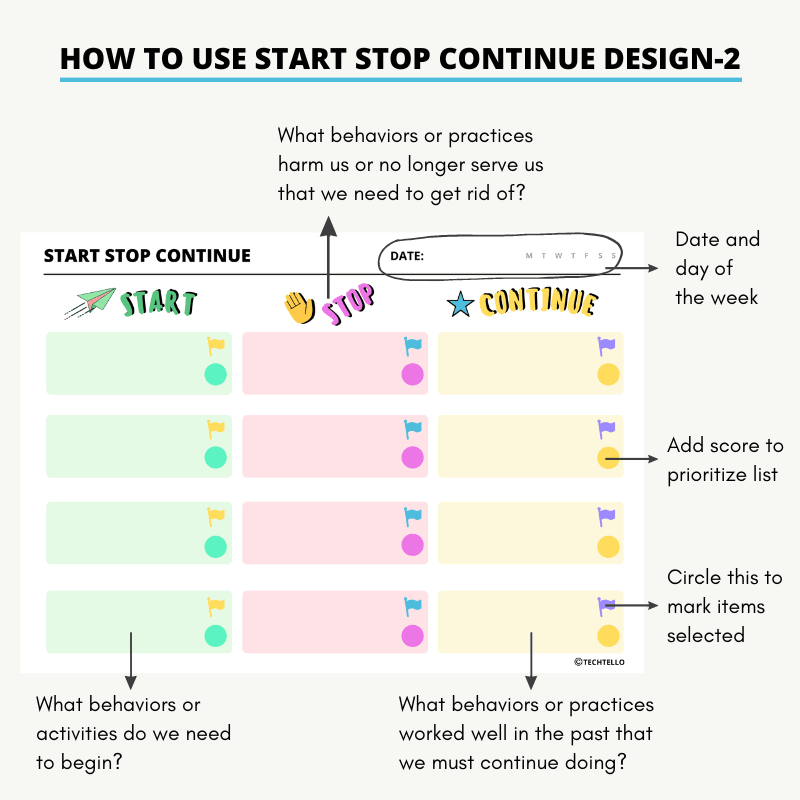
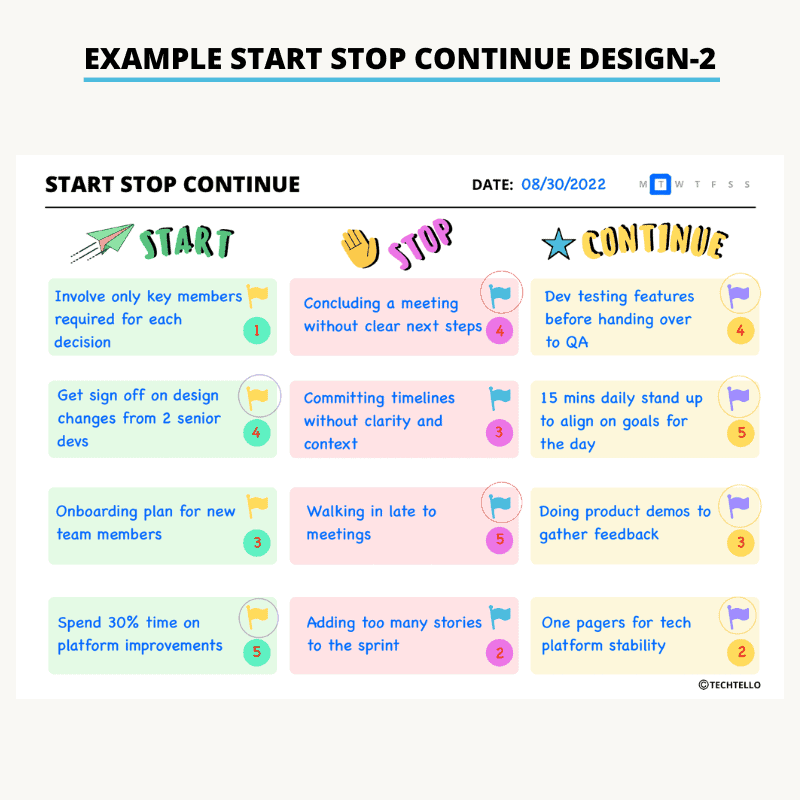
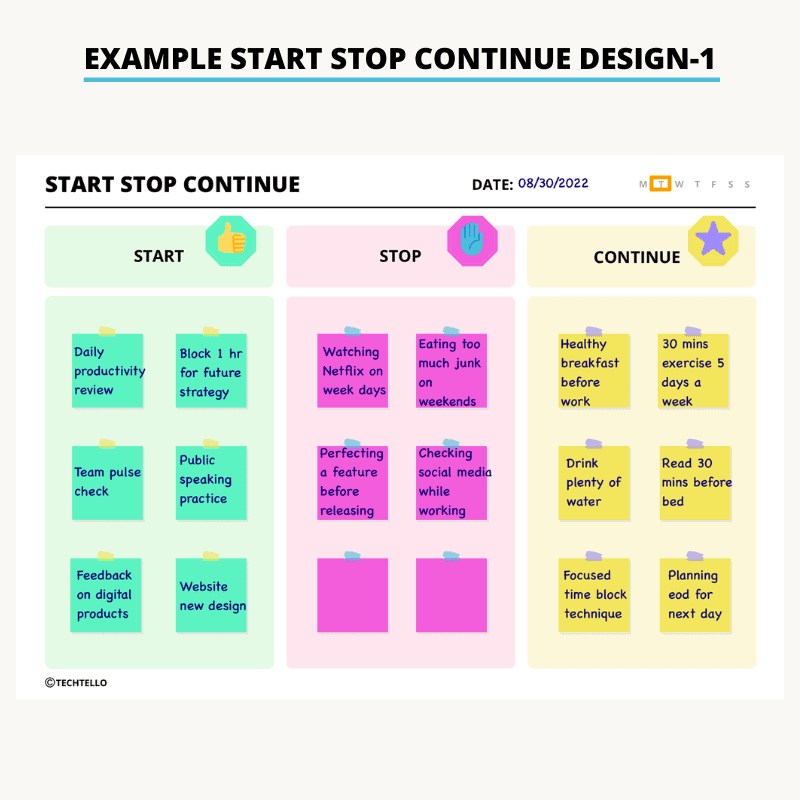
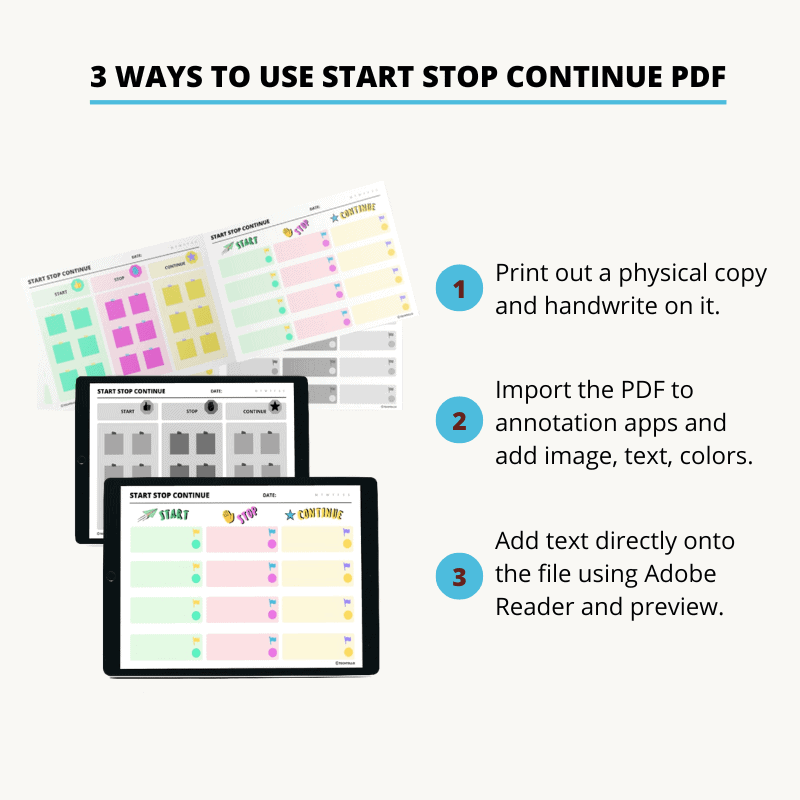
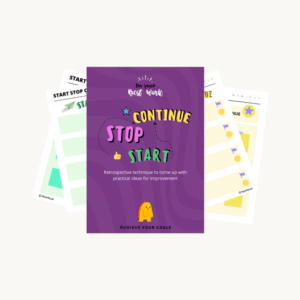
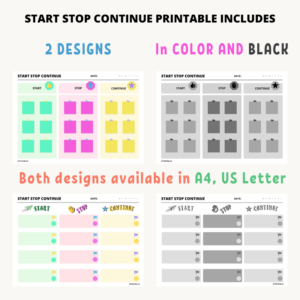
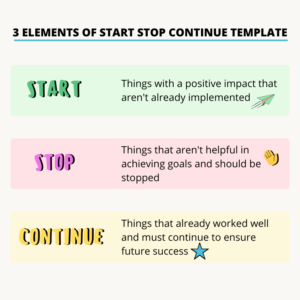
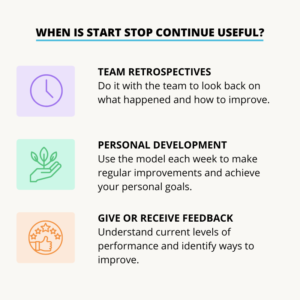
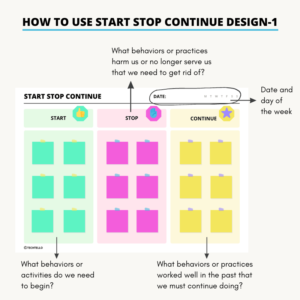
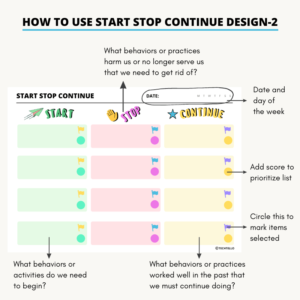
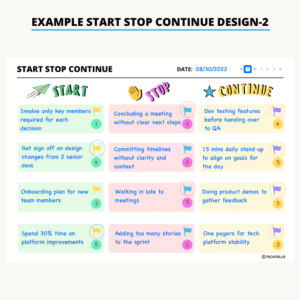
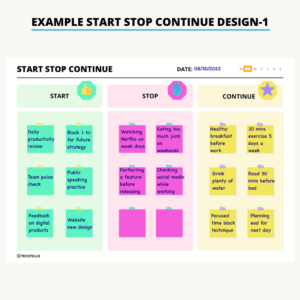
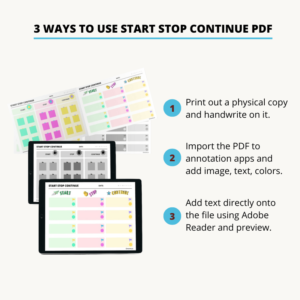
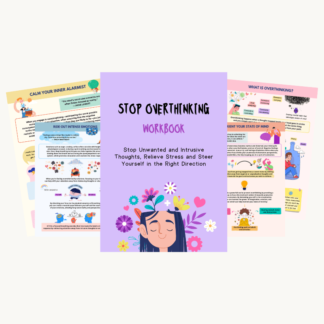
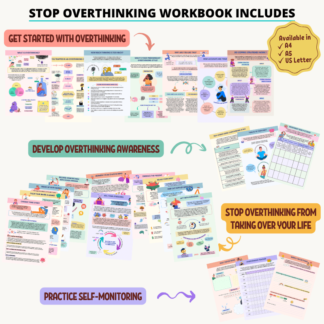
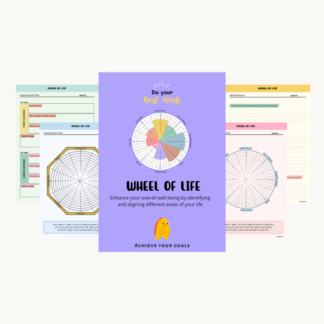
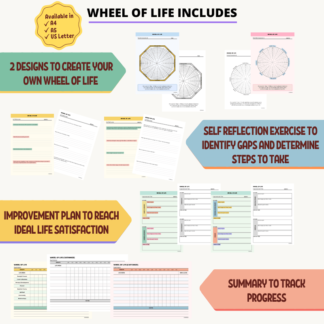
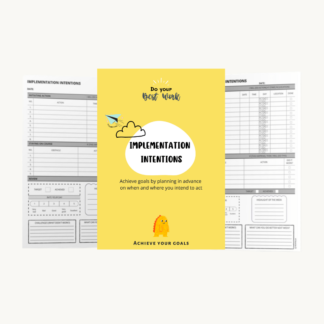
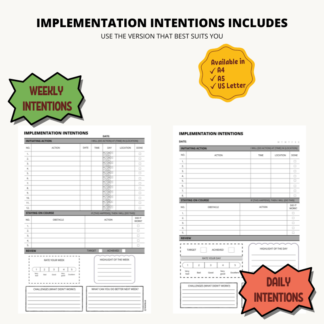
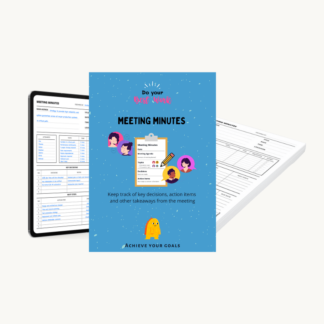
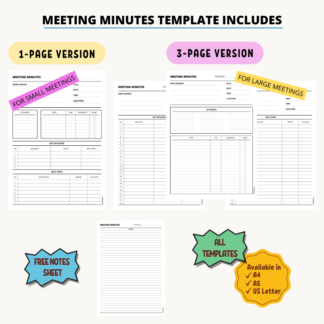
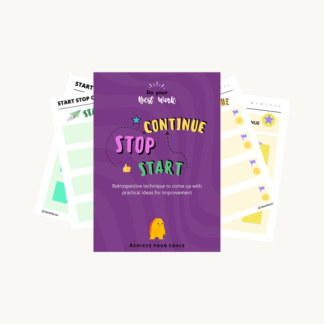
Reviews
There are no reviews yet.